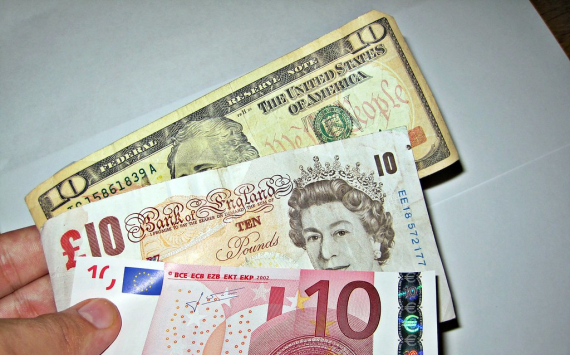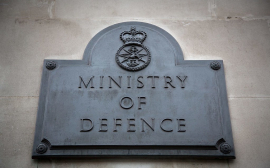Description
The Bank for International Settlements (BIS) is an international financial institution owned by central banks that "fosters international monetary and financial cooperation and serves as a bank for central banks". The BIS carries out its work through its meetings, programmes and through the Basel Process – hosting international groups pursuing global financial stability and facilitating their interaction. It also provides banking services, but only to central banks and other international organizations. It is based in Basel, Switzerland, with representative offices in Hong Kong and Mexico City.
History
The BIS was established in 1930 by an intergovernmental agreement between Germany, Belgium, France, the United Kingdom, Italy, Japan, the United States, and Switzerland. It opened its doors in Basel, Switzerland, on 17 May 1930.
The BIS was originally intended to facilitate reparations imposed on Germany by the Treaty of Versailles after World War I, and to act as the trustee for the German Government International Loan (Young Loan) that was floated in 1930. The need to establish a dedicated institution for this purpose was suggested in 1929 by the Young Committee, and was agreed to in August of that year at a conference at The Hague. The charter for the bank was drafted at the International Bankers Conference at Baden-Baden in November, and adopted at a second Hague Conference on January 20, 1930. According to the charter, shares in the bank could be held by individuals and non-governmental entities. However, the rights of voting and representation at the Bank's General Meeting were to be exercised exclusively by the central banks of the countries in which shares had been issued. By agreement with Switzerland, the BIS had its corporate existence and headquarters there. It also enjoyed certain immunities in the contracting states (Brussels Protocol 1936).
The BIS's original task of facilitating World War I reparation payments quickly became obsolete. Reparation payments were first suspended (Hoover moratorium, June 1931) and then abolished altogether (Lausanne Agreement, July 1932). Instead, the BIS focused on its second statutory task, i.e. fostering the cooperation between its member central banks. It acted as a meeting forum for central banks and provided banking facilities to them. For instance, in the late 1930s, the BIS was instrumental in helping continental European central banks ship out part of their gold reserves to London.
As a purportedly apolitical organization, the BIS was unable to prevent transactions that reflected contemporaneous geopolitical realities but were also widely regarded as unconscionable. As a result of the policy of appeasement of Nazi Germany by the UK and France, in March 1939, the BIS was obliged to transfer 23 tons of gold it held, on behalf of Czechoslovakia, to the German Reichsbank, following the German annexation of Czechoslovakia.
At the outbreak of World War II in September 1939, the BIS Board of Directors – on which the main European central banks were represented – decided that the Bank should remain open, but that, for the duration of hostilities, no meetings of the Board of Directors were to take place and that the Bank should maintain a neutral stance in the conduct of its business. However, as the war dragged on evidence mounted that the BIS conducted operations that were helpful to the Germans. Also, throughout the war, the Allies accused the Nazis of looting and pleaded with the BIS not to accept gold from the Reichsbank in payment for prewar obligations linked to the Young Plan. This was to no avail as remelted gold was either confiscated from prisoners or seized in victory and thus acceptable as payment to the BIS.: 245–252 Operations conducted by the BIS were viewed with increasing suspicion from London and Washington. The fact that top-level German industrialists and advisors sat on the BIS board seemed to provide ample evidence of how the BIS might be used by Hitler throughout the war, with the help of American, British and French banks. Between 1933 and 1945 the BIS board of directors included Walther Funk, a prominent Nazi official, and Emil Puhl responsible for processing dental gold looted from concentration camp victims, as well as Hermann Schmitz, the director of IG Farben, and Baron von Schroeder, the owner of the J.H. Stein Bank, all of whom were later convicted of war crimes or crimes against humanity.
The 1944 Bretton Woods Conference recommended the "liquidation of the Bank for International Settlements at the earliest possible moment". This resulted in the BIS being the subject of a disagreement between the U.S. and British delegations. The liquidation of the bank was supported by other European delegates, as well as Americans (including Harry Dexter White and Secretary of the Treasury Henry Morgenthau Jr.).[12] Abolition was opposed by John Maynard Keynes, head of the British delegation.
Keynes went to Morgenthau hoping to prevent or postpone the dissolution, but the next day it was approved; the liquidation of the bank was never actually undertaken. In April 1945, the new U.S. president Harry S. Truman ended U.S. involvement in the scheme. The British government suspended the dissolution and the decision to liquidate the BIS was officially reversed in 1948.
After World War II, the BIS retained a distinct European focus. It acted as Agent for the European Payments Union (EPU, 1950–58), an intra-European clearing arrangement designed to help the European countries in restoring currency convertibility and free, multilateral trade.[15] During the 1960s – the heyday of the Bretton Woods fixed exchange rate system – the BIS once again became the locus for transatlantic monetary cooperation. It coordinated the central banks' Gold Pool and a number of currency support operations (e.g. Sterling Group Arrangements of 1966 and 1968. The Group of Ten (G10), including the main European economies, Canada, Japan, and the United States, became the most prominent grouping.
With the end of the Bretton Woods system (1971–73) and the return to floating exchange rates, financial instability came to the fore. The collapse of some internationally active banks, such as Herstatt Bank (1974), highlighted the need for improved banking supervision at an international level. The G10 Governors created the Basel Committee on Banking Supervision (BCBS), which remains active. The BIS developed into a global meeting place for regulators and for developing international standards (Basel Concordat, Basel Capital Accord, Basel II and III). Through its member central banks, the BIS was actively involved in the resolution of the Latin American debt crisis (1982).
From 1964 until 1993, the BIS provided the secretariat for the Committee of Governors of the Central Banks of the Member States of the European Community (Committee of Governors). This Committee had been created by the European Council decision to improve monetary cooperation among the EC central banks. Likewise, the BIS in 1988–89 hosted most of the meetings of the Delors Committee (Committee for the Study of Economic and Monetary Union), which produced a blueprint for monetary unification subsequently adopted in the Maastricht Treaty (1992). In 1993, when the Committee of Governors was replaced by the European Monetary Institute (EMI – the precursor of the ECB), it moved from Basel to Frankfurt, cutting its ties with the BIS.
In the 1990s–2000s, the BIS successfully globalized, breaking out of its traditional European core. This was reflected in a gradual increase in its membership (from 33 shareholding central bank members in 1995 to 60 in 2013, which together represent roughly 95% of global GDP), and also in the much more global composition of the BIS Board of Directors. In 1998, the BIS opened a Representative Office for Asia and the Pacific in the Hong Kong SAR. A BIS Representative Office for the Americas was established in 2002 in Mexico City.
The BIS was originally owned by both central banks and private individuals, since the United States, Belgium and France had decided to sell all or some of the shares allocated to their central banks to private investors. BIS shares traded on stock markets, which made the bank an unusual organization: an international organization (in the technical sense of public international law), yet allowed for private shareholders. Many central banks had similarly started as such private institutions; for example, the Bank of England was privately owned until 1946. In more recent years the BIS has bought back its once publicly traded shares. It is now wholly owned by BIS members (central banks) but still operates in the private market as a counterparty, asset manager and lender for central banks and international financial institutions. Profits from its transactions are used, among other things, to fund the bank's other international activities.
After the 2022 Russian invasion of Ukraine, in March 2022 the BIS suspended the Bank of Russia's membership.






















